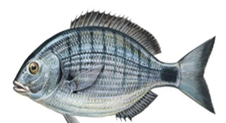Protected Areas in Portugal
Portugal is a country with a very great richness when we talk about marine conservation. The territory we have is enormous when we realize the small piece of land that we are.
This article is needed to give an insight into 2 Marine Protected Areas in Portugal and how they work. In Portugal there are some MPAs with different types of management and maintenance depending on the needs of the animals and people. From north to south with passage to the islands. The Direção Geral de Recursos Marinhos (DGRM) and OSPAR are the responsible for the creation of marine protected areas and therefore important in the whole process involved. I will speak about Avencas and Azores.
- Avencas MPA
- MPA Passport:
- Creation date: 2016
- Maintenance: Municipality of Cascais, Lisboa
- Bathymetry line: 5 meters
- Total area: 1500 square meters

Before being a MPA this area was a Zone of Biophysical Interest of Avencas (ZIBA), i.e. from 1998 until 2016. This alteration was carried out by the entities of the Chamber of Cascais. It is the first area with local management that has a different approach (communal). Normally this work is done for the ICNF (Institute for Conservation of Nature and Forests) (Ferreira et al., 2017).
Conservation and monitoring is done throughout the year and not just in certain periods of time. Unfortunately the results are not very good, because it is known that some species come to decrease its presence more and more.
Factors that can create these problems:
- The MPA is too small;
- There is not much money to do the management.
Species that we can find in the MPA



It is difficult, according to a researcher of this MPA, to understand how the species change, but there has been an unprecedented increase in Dicentharcus punctatus accompanied by a sharp reduction in Diplodus sargus and Atherina presbyter. This may happen because the first fish is a carnivorous species. Information of this type is very important when trying to understand the trade and biodiversity in such a small area.
Invasive species can be found everywhere. It has become a problem that happens sometimes in MPA everywhere. There is red algae and some bryozoans there.

Restrictions found:
- Catching clams is not allowed;
- Neither aquaculture activities;
- Neither motor water sports;
- Recreational fishing (octopus and some crab species) and spearfishing is allowed in some areas.
It is very difficult for this MPA to provide the conservation this area needs, due to the authorization of many activities and the participation of many external factors.
Communication and activities to raise public awareness: Kidsdive is a project made for young people to help them discover nature and life under water. Informing the little ones is an indispensable approach that transfers knowledge to the older ones.
- Azores MPAs
Marine Protected Areas (MPAs) have been developed around the world to halt the degradation of ecosystems. The first MPAs established in the 1980s, with some pioneering nations such as the United States, Australia and the Azores islands in Portugal. In the same decade, there was increased concern and environmental awareness about marine ecosystems and the threats they face, coupled with the fact that traditional methods of fisheries management have allowed for fish stocks to be overexploited and collapsed.
As the creation of MPAs increased and the pursuit of full effectiveness in ecological goals, the science of MPAs gained momentum in the 1990s.
The Azores archipelago is the most isolated island group in the North Atlantic, the current MPA covers approximately 110 000 Km² of coastal habitats, seamounts, hydrothermal vents and mid-ocean ridges, in and outside the Exclusive Economic Zone.

The article traces the establishment of the Azores MPAs, taking into account the socioeconomic and socio-political context, particularly in terms of marine resource utilization, conservation research and management context. The latter is complex because the archipelago is an autonomous region of Portugal that is part of the European Union. Consequently, the regional government of the Azores is responsible for making decisions and creating environmental legislation, but which is in line with national, European and international policies and agreements.
Between 2007 and 2009, UNESCO approved and recognized the islands of Corvo, Flores and Graciosa and the surrounding marine environment as Biosphere Reserves
Between 2006 and 2001, OSPAR included 11 Azorean MPAs in its network: 7 in national waters and 4 outside national jurisdiction. 8 of these OSPAR MPAs included marine and submarine soil protection of two coastal areas, 3 seamounts and 2 hydrothermal vent fields in the EEZ; and a hydrothermal field located outside the EEZ, which was the first domestic offshore MPA proposed and accepted by OSPAR.
To establish the MPAs they used 2 different forms. The first is the SWOT which means (Strengths, Weaknesses, Opportunities and Threats). The second is PESTEL (Political-administrative, Economic, Social, Technology-research, Legal and Environmental).
Measures:
- Activities for a control of the waterbed;
- Exclusion of some forms of fishing;
- The re-presentation to be protected of small islands is more intense.
According to the rules, a protection of 1.12% such as the one presented by the Azores MPA (2014) is not sufficient. It should have 10% protection of marine and coastal waters. When an area is too small, conservation is not done well and it is also not easy to maintain and raise awareness. Economic factors have a great influence on the impacts, for example, we have fishing, tourism and marine transport.
Species that we can find in the MPA

Finally, there have been many advances in recent years. The help of the University of the Azores was an important factor. Current activities:
- Control of the path travelled by the animals;
- Underwater robots;
- Conservation of deep-sea organisms in the laboratory.
— Presentation done by Pedro






